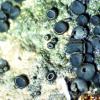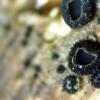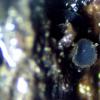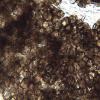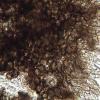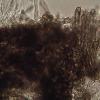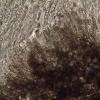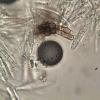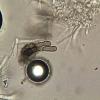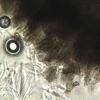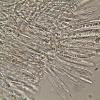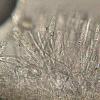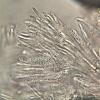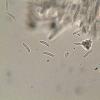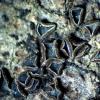
18-12-2025 21:17
Pol DebaenstThe identification took me to Byssonectria deformi

15-12-2025 07:09
 Danny Newman
Danny Newman
indet. Rutstroemiaceae sp. on unk. fallen leavesMc

19-12-2025 10:10
Patrice TANCHAUDBonjour, récolte réalisée en milieu dunaire, a

18-12-2025 17:23
 Bruno Coué
Bruno Coué
Bonjour,je serais heureux d'avoir votre avis sur c

18-12-2025 18:07
Margot en Geert VullingsThese plumes were found on rotten wood.They strong

17-12-2025 18:35
 Michel Hairaud
Michel Hairaud
Bonjour à tous/Hi to everyone I am passing along

15-12-2025 15:48
 Danny Newman
Danny Newman
Melanospora cf. lagenaria on old, rotting, fallen

15-12-2025 15:54
 Johan Boonefaes
Johan Boonefaes
Unknown anamorph found on the ground in coastal sa

15-12-2025 21:11
 Hardware Tony
Hardware Tony
Small clavate hairs, negative croziers and IKI bb
 Hola tengo estas muestras recogidas en Tamarix.
Hola tengo estas muestras recogidas en Tamarix.Lo mas cercano que veo es Mollisia rosae, pero esta es de Rosal, no se si saldra en otro sustrato o simplemente estoy equivocado y puede ser una Pyrenopeziza.
La mayor medida es de 0,53 mm.
Excipulo de color marron con celulas globosas a subglobosas.
Ascas con croziers, J-, miden entre 52--56 x 5,5--7.
Esporas 8--12 x 1,8--2,3 con una gota lipidica en cada extremo.
Parafisis X 3--X 3,5, apice redondeado.
Pelos 40--70 X 4, apice mas inflado 5--6,5.
Con KOH los pelos marrones viran a grises
Con Melzer J -
Un saludo
Rafael

Hello,
this is a Mollisia ss. str (no Pyrenopeziza)., and I think this could be Mollisia ligni.
The spores are a little too long for this species, but the rest would fit.
The ascus porus reaction, is it really negative?
Did you observe the shape of the fruitbodies, when it is slowly drying? Does it become triangular when slowly dehydrating?
best regards,
Andreas

A ver si nos podemos ir acercando
Rafael

Rafael

Hola Rafael,
the shape of the ascomata is very typical for Mollisia lignI!
So I would have no probelms to name this M. ligni (non ss. BREITENBACH & KRÄNZLIN!!)
best regards,
Andreas

